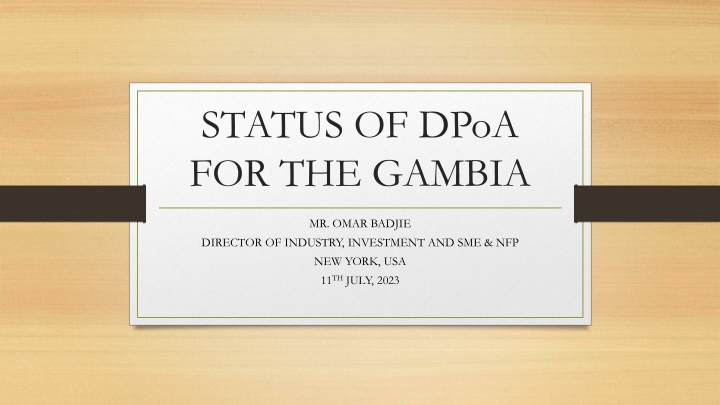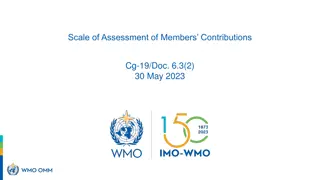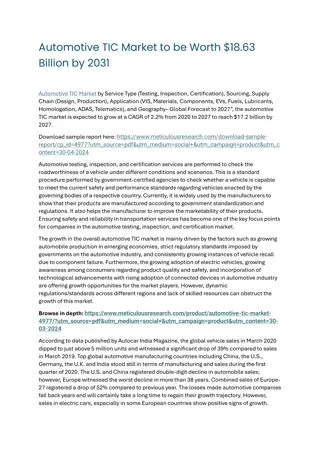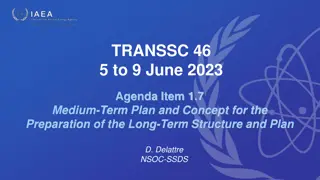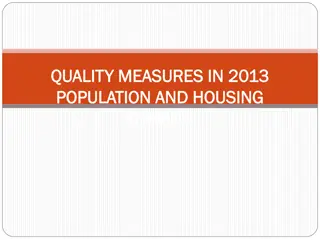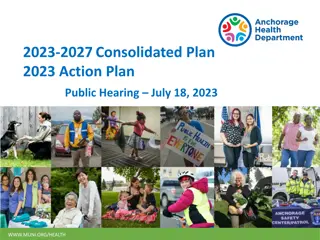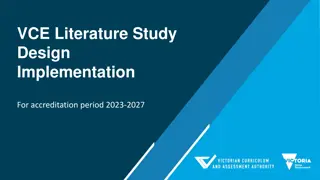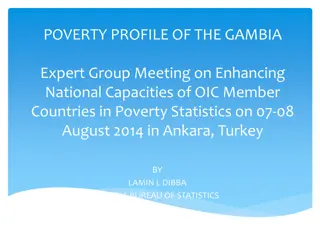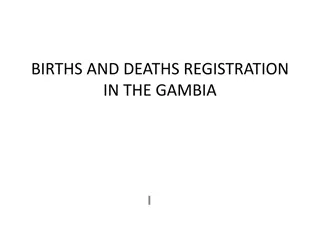National Development Plan 2023-2027 for The Gambia
The Government of The Gambia introduces a Green Recovery Focus National Development Plan to address challenges and drive sustainable growth, with a strong emphasis on governance, resilience, and inclusive development. Explore the priorities, implementation status, and future strategies outlined in the plan.
Download Presentation

Please find below an Image/Link to download the presentation.
The content on the website is provided AS IS for your information and personal use only. It may not be sold, licensed, or shared on other websites without obtaining consent from the author.If you encounter any issues during the download, it is possible that the publisher has removed the file from their server.
You are allowed to download the files provided on this website for personal or commercial use, subject to the condition that they are used lawfully. All files are the property of their respective owners.
The content on the website is provided AS IS for your information and personal use only. It may not be sold, licensed, or shared on other websites without obtaining consent from the author.
E N D
Presentation Transcript
STATUS OF DPoA FOR THE GAMBIA MR. OMAR BADJIE DIRECTOR OF INDUSTRY, INVESTMENT AND SME & NFP NEW YORK, USA 11THJULY, 2023
1. Introduction The Government of The Gambia has formulated The Green Recovery Focus National Development Plan (NDP 2023 - 2027) as a successor to the elapsed NDP 2018-2022. This new planning framework, developed under the leadership of The Government of The Gambia with a whole of society approach, will serve as the vehicle to chart the recovery of The Gambia from Covid-19 and other shocks such as climate change, as well as address the medium-term transformational aspirations of the country. The Plan is in seven pillars as shown below: Pillar I: Resilience to Shocks and Crises Pillar II: Governance Reforms; Pillar III: Macroeconomic Stability and Growth; Pillar IV: Human Capital Development; Pillar V: Agriculture, Environment, Natural Resources and Climate Change; Pillar VI: Empowerment, Social Inclusion and Leaving No One Behind; and Pillar VII: Energy, Infrastructure and Connectivity
2. NDP- DPOA DPOA PRIORITIES National Development Plan Pillars N O 1 Priority 5. Addressing climate change, recovering from the COVID-19 pandemic, and building resilience against future shocks; Pillar I: Resilience to Shocks and Crises Pillar II: Governance Reforms; Priority 6. Mobilizing international solidarity, reinvigorate global partnerships and innovative tools for risk-informed sustainable development - A march towards sustainable graduation. 2 Pillar III: Macroeconomic Stability and Growth; Priority 3. Structural transformation as a driver of prosperity; 3 Pillar IV: Human Capital Development; Priority 2. Leveraging the power of science, technology, and innovation to fight against multidimensional vulnerabilities as well as to achieve the Sustainable Development Goals (SDGs); 4 Pillar V: Agriculture, Environment, Natural Resources and Climate Change; Priority 2. Leveraging the power of science, technology, and innovation to fight against multidimensional vulnerabilities as well as to achieve the Sustainable Development Goals (SDGs); 5 Pillar VI: Empowerment, Social Inclusion and Leaving No One Behind; and Priority 1. Investing in people in the LDCs: Eradicating poverty and building capacity seeking to leave no one behind; 6
IMPLEMENTATION STATUS Final review of The IPOA: has indicated that the National Development Plan (NDP) makes an explicit commitment to integrate and implement the SDGs and Agenda 2063, as well as the Paris Agreement on Climate Change and the Incoming Doha Programme of Action. This analysis shows that the NDP clearly addresses the economic, environmental and social dimensions of sustainable development and includes a strong focus on critical governance issues as well as on addressing inequality. However, at this stage, The Government is working with UN partners (UNRC, UNDP and UNCDF) to develop a National Implementation Strategy for DPOA.
CHALLENGES AND WAYFORWARD Poverty reduction has been most significant in the urban Greater Banjul Area. While less than half the population lives in rural areas, they account for 60 per cent of the total poor. Rural poverty went up from 64.2% to 69.5% from 2010-2015/2016. The service sector accounts for about 65 per cent of GDP, driven by the wholesale and retail subsectors (25 per cent), followed by transportation, storage, communications and tourism; industry contributed less than 20 per cent of GDP for the last decade. Agriculture generates about 75 per cent of household income and provides livelihoods for 70 per cent of the labour force. The Disruption caused by Covid 19 pandemic and the Russia-Ukraine War are some of the challenges hindering the gains registered. As a way forward, The Gambia is taking stock of the final review of the IPOA; success, challenges and recommendations. The recommendation will be inbuild into the National DPOA Implementation Strategy.
